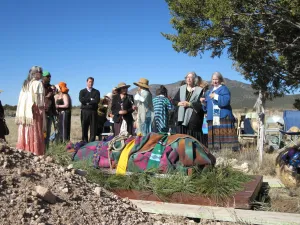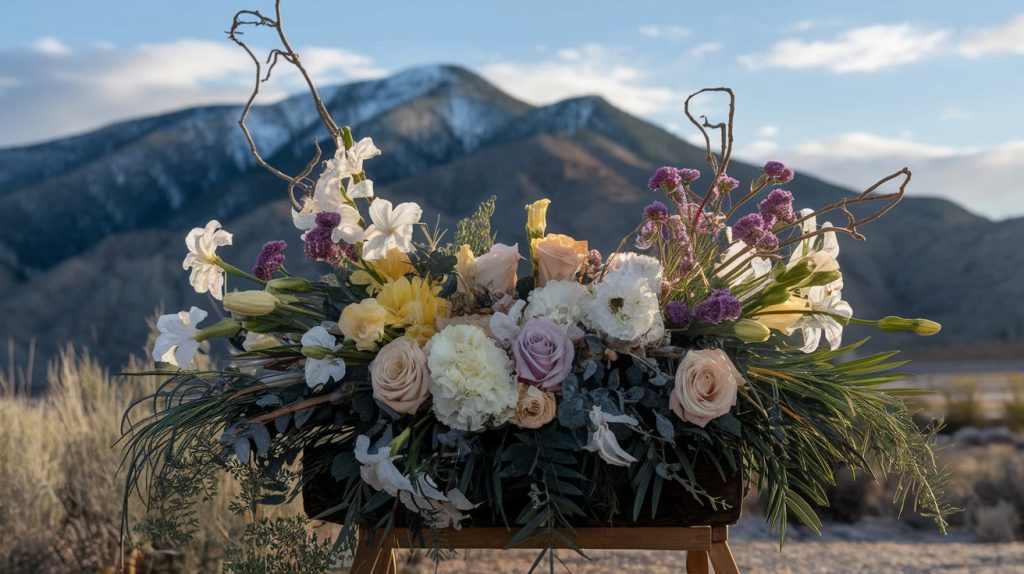
In my years of providing funeral flowers in Southern Arizona, I’ve had the honor of serving many Tohono O’odham families. Through their guidance and patience, I’ve learned valuable lessons about their sacred traditions and how to provide appropriate floral services that respect their cultural practices.
The Sacred Nature of Tohono O’odham Ceremonies
My first experience serving a Tohono O’odham family taught me that every aspect of their funeral traditions carries deep meaning. Before sharing what I’ve learned, I want to acknowledge that these observations come from my limited perspective as a service provider, and families may follow different practices.
Traditional Ceremonies
Through working with community members, I’ve learned:
- Ceremonies often follow a four-day tradition
- Each day holds specific significance
- Dawn and dusk are particularly important times
- Natural elements play essential roles
- Community participation is central to the process
Cultural Protocols
Families have taught me about:
- The importance of timing in flower deliveries
- Proper ways to approach sacred spaces
- How to work with family representatives
- Traditional color significances
- Appropriate behavior during ceremonies
Floral Considerations for Traditional Services
Working closely with families and cultural advisors has helped me understand appropriate floral choices and arrangements.
Traditional Elements
I’ve learned to incorporate:
- Native desert plants when requested
- Traditional medicinal plants when appropriate
- Local wildflowers in season
- Desert grasses with cultural significance
- Natural materials for wrapping and presentation
Practical Arrangements
Experience has shown the importance of:
- Creating sturdy arrangements for outdoor ceremonies
- Using materials that withstand desert conditions
- Incorporating traditional basket designs when asked
- Following specific color preferences
- Ensuring arrangements support rather than overshadow traditions
Working with Sacred Spaces
Each location requires different considerations and respect for specific protocols.
Traditional Venues
When serving these locations, I’ve learned about:
- Proper entrance and exit protocols
- Appropriate times for delivery
- Where flowers may or may not be placed
- How to work with ceremonial leaders
- Respecting sacred areas
Modern Venues
For services in contemporary settings, I consider:
- Blending traditional and modern elements
- Working with facility guidelines
- Maintaining cultural respect in new spaces
- Coordinating with family representatives
- Supporting both cultural and practical needs
Seasonal and Environmental Considerations

The desert environment influences how we approach floral services for traditional ceremonies.
Desert Climate Adaptations
Years of experience have taught me to:
- Work with natural desert rhythms
- Protect arrangements from extreme conditions
- Use native plants that withstand heat
- Consider morning dew and evening moisture
- Plan for wind and sun exposure
Seasonal Timing
I’ve learned that:
- Different seasons require different approaches
- Certain plants hold significance in specific seasons
- Traditional timing often follows natural cycles
- Weather patterns affect ceremony timing
- Seasonal flowers carry special meanings
Building Respectful Relationships
The most important lesson has been about building trust and understanding with the community.
Communication Practices
I’ve learned to:
- Listen more than speak
- Ask appropriate questions
- Work through proper channels
- Respect family decision-making processes
- Honor traditional communication styles
Cultural Learning
Over time, I’ve come to:
- Appreciate the depth of traditions
- Recognize the importance of community
- Understand the role of natural cycles
- Respect ceremonial timing
- Honor family preferences
Through years of service to Tohono O’odham families, I’ve learned that my role is to support their traditions with respect and humility. Each service teaches me more about the beautiful ways their culture honors those who have passed, and I remain grateful for the opportunity to serve their community.
